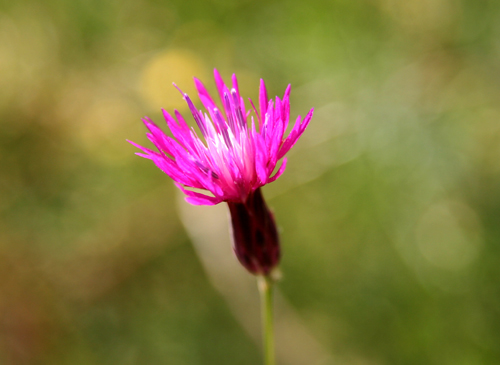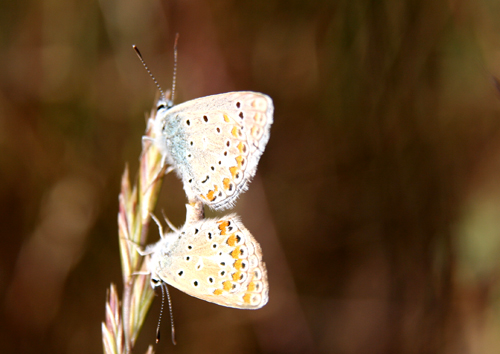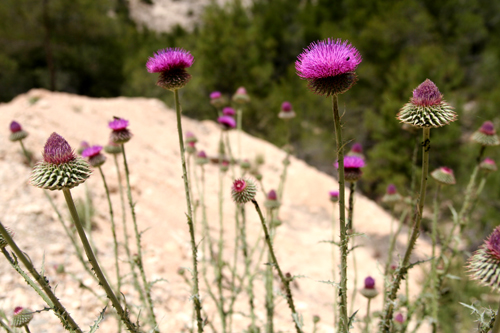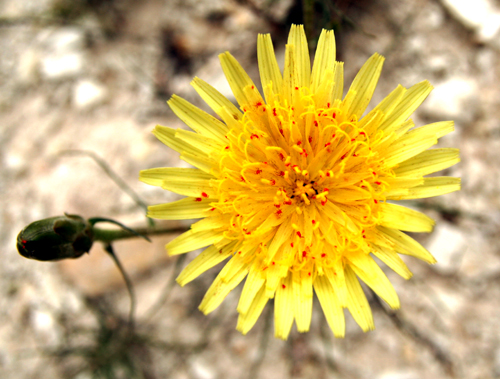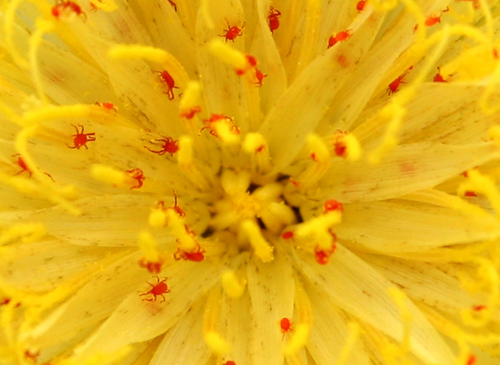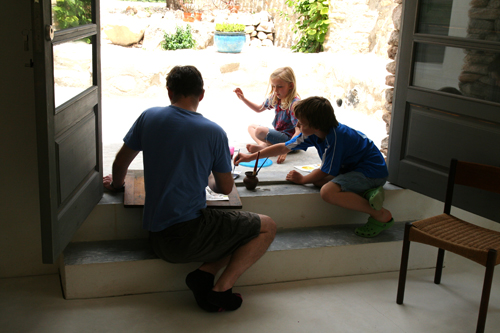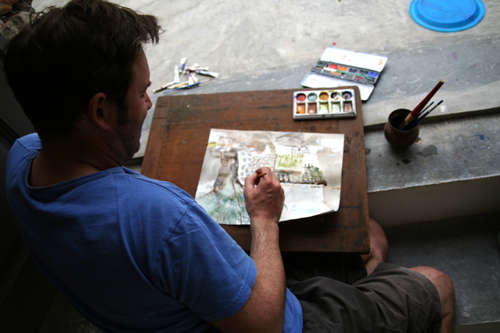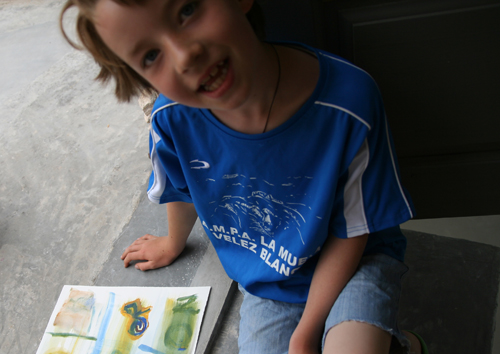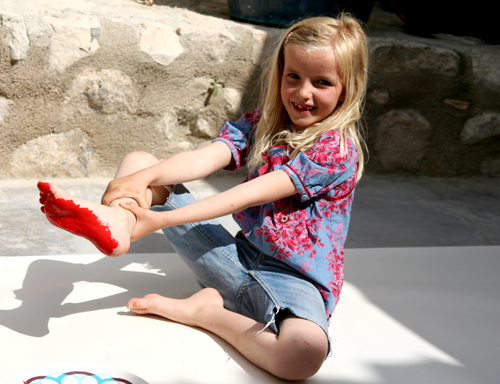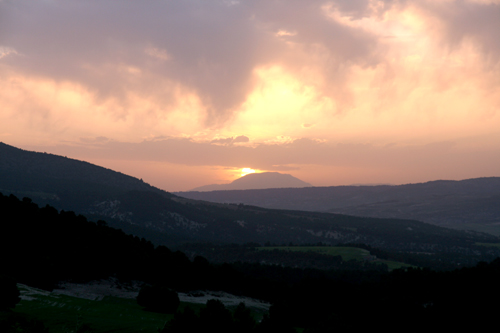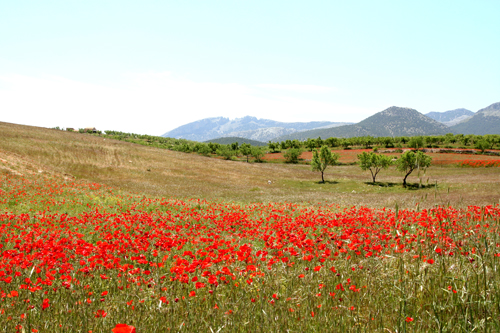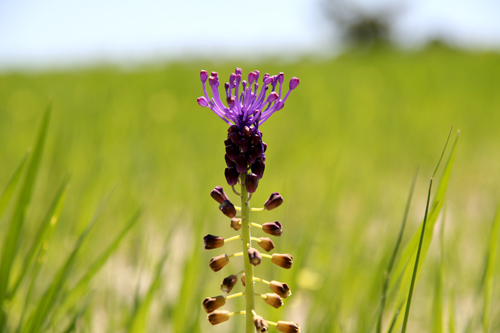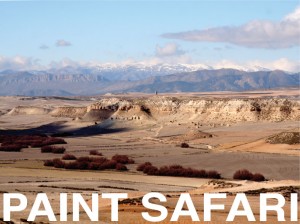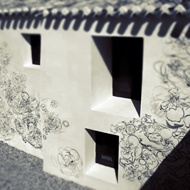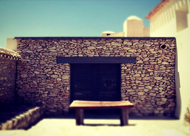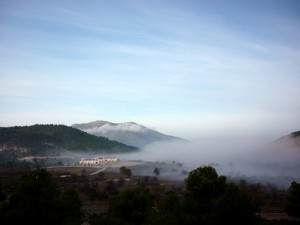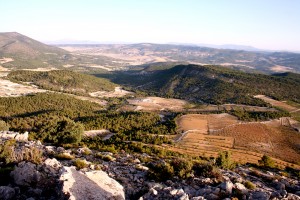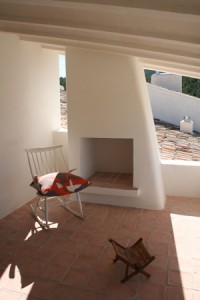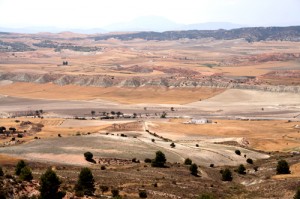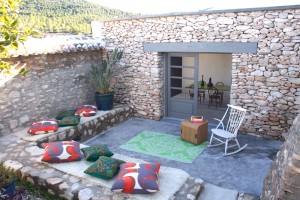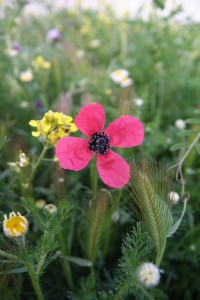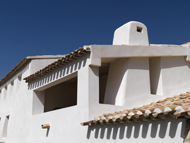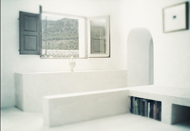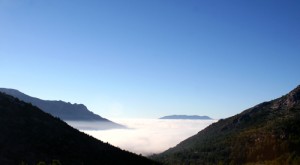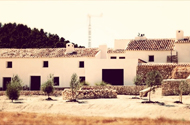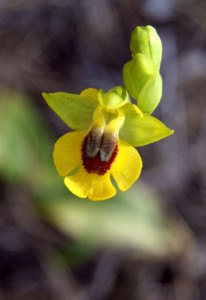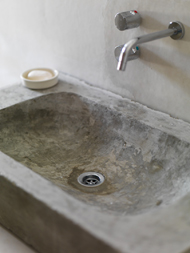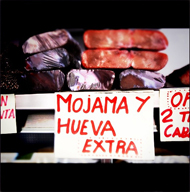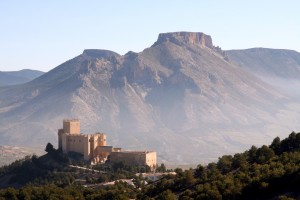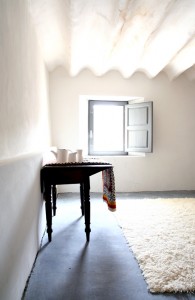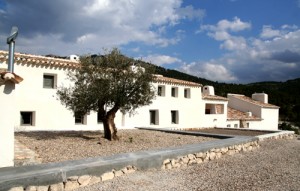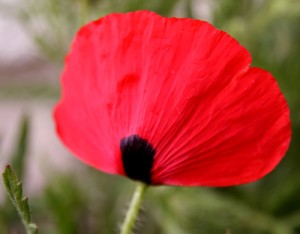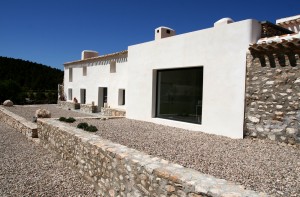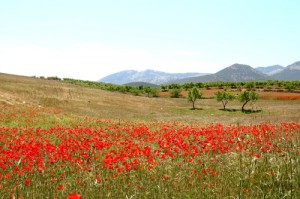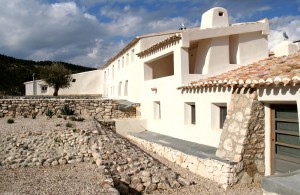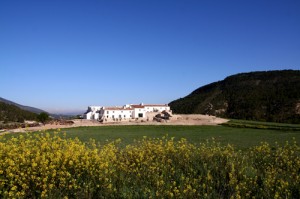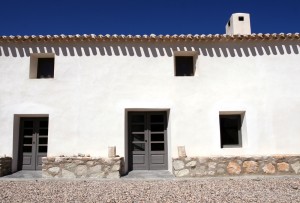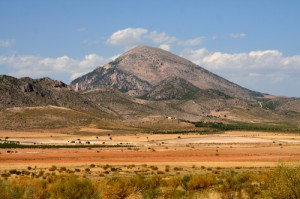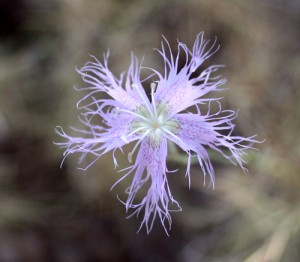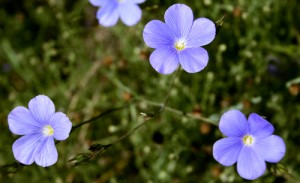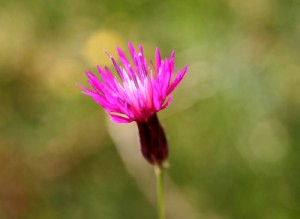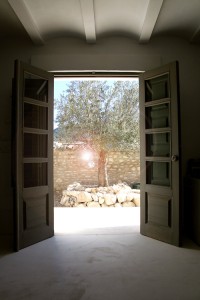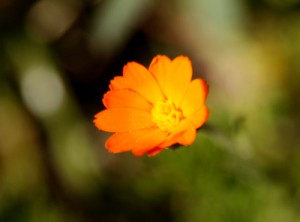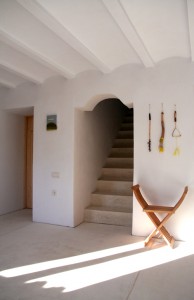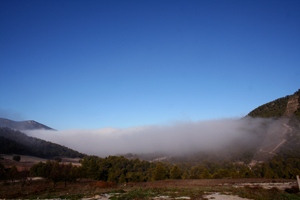Archive for May, 2009
The Madrid Confessions

Cyber friend and top blogger Ben Curtis has just published a second book about life in Spain. This one however is an audio book which can be found here.
It’s a Spanish tale of bullfighting, fascist football hooligans, terror bombings, dubious neighbours, psychoanalysis, hypochondria, love and childbirth, and ‘blogging’. It just goes to show that life here is exactly like an Almodovar film.
If you want to know what the ‘living in Spain’ experience is actually like listen to Ben’s audiobook, it’s excellent. It’s a Madrid confession from an Englishman who has probably become more Spanish than he realises.
Young Americans - WWOOF
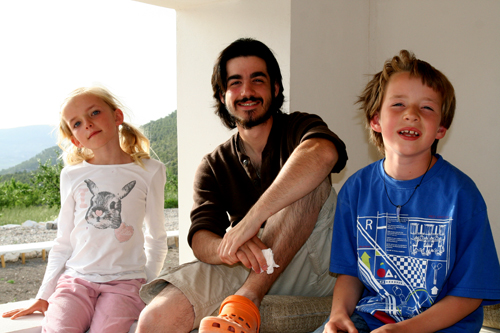
Los Gazquez has just said goodbye to our first Wwoofer (world wide opportunities on organic farms), Armand. He is 19 and from New Jersey and although he sounds every inch an American he is secretly French (as his name suggests), dad being a French pastry chef.
We must say it was a delight and he was especially great with the children who enjoyed his company and indulgences very much. They will particularily miss the scene by scene re-enactment of Star Wars films too.
Armand you are welcome back any time you like.
Next month we have two guys from California, let’s hope their visit will be as successful. I’m sure it will.
Sea Blog
Cortijada Los Gazquez has invited our friend Sue Amos to make a contribution to our blog. Sue is an artist and landscape designer and all round top plantsperson. And within the spirit of ecological practices here at Los Gazquez we asked Sue to make a contribution from her perspective back in London where amongst other things she cultivates two allotments.
You can find Sue here.

Taking one visit to a local beach (this is the nudist beach at Shellness on the Isle of Sheppey - it was a blusteringly fresh day!), a bag and a dog, collect a basket load of washed up (upper tide line) seaweed to take back for the plot. (Just check it’s ok to do so - some beaches will have preservation orders or be privately owned). It needs to be fairly fresh, ideally washed up after a storm and not too stinky. Pulling it off rocks and groins means that you will be depriving little creatures of homes.
Seaweed has lots of wonderful qualities for plants and soil, a smell to remind you of that trip to the beach and regenerative properties and essential minerals such as iron, copper, zinc, boron and manganese. It’s also rich in potash. It helps improve the texture of the soil, and is considered a good substitute for farmyard manure that doesn’t need to be rotted down before using. It can be spread thickly as a mulch round shrubs - I’m going to try some around my soft fruit bushes. A delicious smelly liquid can be made for use as a foliar spray - see recipe below or add straight to the compost heap, layering it amongst other materials.
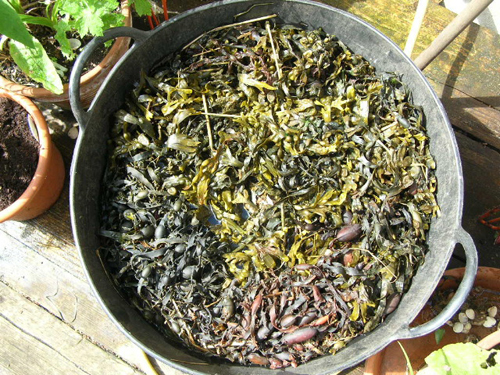
I’m also going to try some in a few of the pits I prepare for the squashes and courgettes, though not too much as I don’t want to lose available nitrogen in the soil for plant growth, just as an aide to retaining water. As this is an experiment, I will run one area with the weed as a trial plot, and one without to see if I can see any difference. I might also try finely chopping some and lining a trench with it, backfilling with soil and planting french beans.
Scientists have done some research already -
How seaweed enhances plant growth.
‘Seaweed is constantly worn down by tides and eaten by fish, so it must grow rapidly to survive. Studies at the University of California showed that a frond of seaweed can grow a foot a day, given optimal conditions. The same growth hormones that prompt such rapid growth in seaweed, when applied to plants as a foliar spray, can increase the speed of cell division and elongation in those plants. The hormones also increase root growth when applied to the soil as meal, or when a seaweed extract is used as a root dip. In recent turf tests at Virginia Polytechnic Institute in Blacksburg, plots sprayed with seaweed extract had 67% to 175% more roots than untreated plots. Plots treated in fall showed a 38% increase in spring growth over untreated plots and showed 52% more roots. In tests at South Carolina’s Clemson University, seeds soaked in liquid sea weed extract showed rapid germination and the resulting seedlings and increased root mass and stronger plant growth than seedlings from untreated seeds. They also had a higher survival rate. Soaking plant roots in seaweed extract reduces transplant shock and speeds root growth. Seaweed foliar sprays promote faster, stronger stem and leaf growth and earlier blossoming and fruit set when sprayed on leaves and flowerbeds.’
Here a a few other interesting things I’ve found on line.
Seaweed, as an algae, is one of planet Earth’s most important living organisms with over 9000 varieties floating about in the world’s oceans. Seaweed actually contributes an amazing amount of life-giving oxygen through the process of photosynthesis; about 75-85% by scientific reckoning. So for all those who thought that trees were the most important thing in producing oxygen for us to breathe, think again. Best not to clean the scum from your pond if you really want to save the planet.

Liquid Seaweed Feed
Get a 10 gallon plastic drum/container, half fill it with seaweed, top up the container with water and let it stand for 3 months, that is the optimum time, I do know people who have used it after a few weeks. Strain off the liquid and add about a cupful to 2 gallons of water, do not be tempted to make it any stronger or you could burn the roots of your plants. Think I might stitch up an old net curtain to make a bag and put the seaweed in that so I don’t have to strain it, then I can put the used seaweed residue on the compost heap. It is quicker and decomposes better if you chop the seaweed up first. You can of course make it in smaller amounts, just use any suitable container
More info
Seaweed contains all major and minor plant nutrients, and all trace elements; alginic acid; vitamins; auxins; at least two gibberellins; and antibiotics.
Of the seaweed contents listed, after nutrients and trace elements, the first, alginic acid, is a soil conditioner; the remainder, if the word may be forgiven in this context, are plant conditioners. All are found in fresh seaweed, dried seaweed meal and liquid seaweed extract — with the one exception of vitamins: these, while present in both fresh seaweed and dried seaweed meal, are absent from the extract.
We will deal first with alginic acid as a soil conditioner. It is a matter of common experience that seaweed, and seaweed products, improve the water-holding characteristics of soil and help the formation of crumb structure. They do this because the alginic acid in the seaweed combines with metallic radicals in the soil to form a polymer with greatly increased molecular weight, of the type known as cross-linked. One might describe the process more simply, if less accurately, by saying that the salts formed by alginic acid with soil metals swell when wet and retain moisture tenaciously, so helping the soil to form a crumb structure.
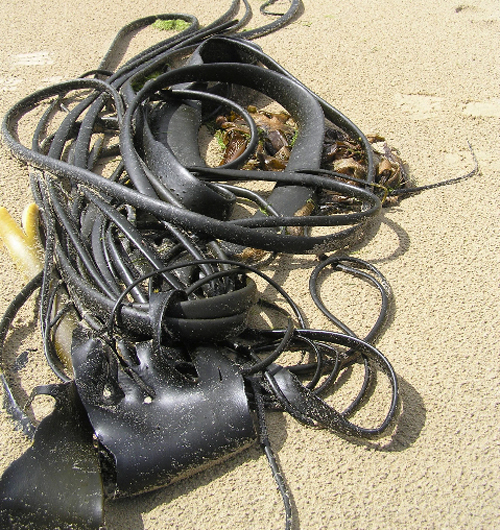
This is as good a reason as any for me to to get down to the coast. Not that I really needed one, but the healthier I can make the soil, the more productive allotment I’m going to have and ultimately the best tasting veg. Then it’ll be back down the beach for a barbie.
Andar Luz
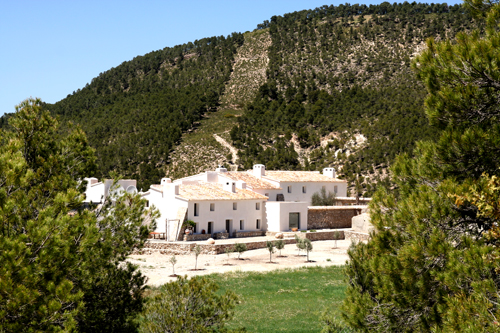
I have heard that the etymology for the name of Andalucia is ‘andar‘, the verb to walk, and ‘luz‘, meaning light. This may or may not be true but there is a phenomenal quality to the light here.
Often the light just bouncing from the ground illuminates the exterior walls here at Los Gazquez. The roof tiles, ‘techo arabe‘ cast fantastically elongated shadows across the whitewashed walls and the reveals of the seemingly small windows radiate light to the interior. There is no half light here either, shadows cut the bright light directly like a constant over exposure. This phosphorescence at midday limits your visual perceptions but increases your auditory consciousness. The breeze in the pine trees, the long grass, the cicadas.
And when the sun has gone I like to walk past the outside walls and feel the days heat radiating against my face.

